Rams, Jeeps, 797-hp Challengers await 2019
Filed under: Equinox, Autos
By John Gilbert
When Dodge Charger and Challenger were powered by almost-obscenely powerful Hemi V8 engines, the curiosity was what could Dodge do next? Next, it turns out, was the definitely-obscene Hellcats with 700 horsepower in 2015. That, we figured, was the ultimate tire-screecher. Then, a year ago, Dodge brought out the overwhelmingly-obscene 2017 Demon, with still more power and torque, and a wider-platform for enhanced stability.
Now it’s 2018, and amid rumors that companies such as Ford, and Dodge parent FCA (Fiat-Chrysler Automobiles), are considering reducing or discontinuing cars in favor of building more and more profitable trucks, we approached the “What’s New for ’19” event at the FCA Proving Grounds in Chelsea, Michigan, with even more curiosity. Turns out, a trio of crazy-powerful Challengers are coming out, and all we are lacking is new adjectives to describe them.
Back in the real world, I heckled a few good friends at the company about when it would switch over all its factories to strictly Ram trucks and Jeeps, but they didn’t take the bait. My heckle was based on the undeniable facts measuring the year-to-date production and sales of all FCA vehicles. Updated figures for the first six months of 2018 show Ram sold 189,997 pickups through June, and 110,382 Wranglers.
Those are by far the top sellers for FCA worldwide. Wrangler, all new in the last year and vastly improved overall, including the spectacular new Chrysler-built 2.0 turbocharged engine, increased sales by 38 percent from last year, through June. Ram’s top-selling figure, on the other hand, actually decreased in sales for the same period by 8 percent, because the completely redone 2019 Ram was not fully distributed to dealers early this calendar year.
However, ranking all the rest of Dodge, Chrysler, Fiat and Jeep vehicles, the order following 1. Ram and 2. Wrangler for the first six months of this year were: 3. Grand Cherokee, 91,589, barely holding off 4. the smaller Cherokee, which showed a 31 percent increase to 91,286, and 5. the Compass, also entirely new, at 72,368 for a whopping 315-percent increase. Just shows what you can do when you do a good job of reinventing a model.
The rest of the top dozen are 6. the Caravan (70,511), 7. Pacifica (53,910), 8. Renegade (41,906), 9. Journey (41,023), 10. Charger (34,786), 11. Challenger (30,545), and Durango (27,378).
Ram remains the king and is certain to increase sales as 2018 continues, but after noting the 189,997 sales for six months, if we add together all the Jeeps — Wrangler, Grand Cherokee, Cherokee, Compass and Renegade — sales are a combined 407,531.
Those are some surprising numbers, and remember, they are only for the first six months of 2018. But the Caravan, which seemed destined to be discontinued in the face of the all-new Pacifica, not only is soldiering on, it watched Pacifica sales improve by 14 percent and improved its own status to outsell its much-heralded cousin. Read more
Regal sedan remains, as stunning GS hatch
Filed under: Weekly test drives, Autos
By John Gilbert
When I had the chance to road-test a new Buick Regal Tour-X a few months ago, I was impressed that the stately old General Motors icon had the audacity to build a station wagon, let alone a long and slinky European-style, all-wheel-drive wagon, powered by a turbocharged 4-cylinder engine.
The traditional Regal sedan, we were told, was no more, and the wagon would carry on. Well, not so fast.
I have now had the chance to spend a week with the new Buick Regal GS, which doesn’t look anything like the current Regal midsize sedan, but then, it doesn’t look anything like the Tour-X wagon, either.
Personally, hatchbacks usually make a lot of sense, and I don’t subscribe to the trend of separating hatchbacks from sedans, any more than I don’t criticize others for failing to point out that all SUVs must also be identified as hatchbacks. Regardless, I would have to say that the new Regal GS is the best-looking car from Buick since…well…maybe ever!
That comes from someone who was never a dedicated Buick fanatic, but who also thought that the current Regal was an outstanding car and the first Buick I can recall that could ignite buyer’s temptation in me. When I learned that previous Regal was a U.S. branded model of a new German Opel Vectra, its progressive leap upward made more sense. It was even made in Europe for a while, while Buick geared up to build it in North America.
Now we find out that if the newest model of the Buick Regal germinated (Germanated?) from the new model Opel Insignia, a longer and classier car than the Vectra/Regal, but one with smoothly aerodynamic lines that exude grace and streamlined speed. General Motors has sold off Opel, which made me curious what Buick would do without its trusty German models, but now we find out that in their separation, Opel promised to keep building cars for Buick, and the Regal GS is a version of the new model, stretched and fitted with a hatchback over its generous cargo area. That allows for a sleek, fastback silhouette.
Parked downtown in Duluth or Minneapolis, we were surprised at how much attention the new Regal GS generated. People would stop on the sidewalk and wait until we returned to the car to quiz us about it. Generally, they would leave, shaking their heads in a real-life version of those inane “Real people, not actors” GM commercials, and mutter things like, “That can’t be a Buick,” or “Sure doesn’t look like a Buick.”
Buick should take note of the accolades, because they are uncommon these days, and comparatively unprecedented for Buick. But valuable.
The bright red Regal GS test car has a neat grille, and the swept-back lines come together in a well-styled rear end, as well. As a 4-door, it’s actually a 5-door with the hatch, but we don’t care, despite the reluctance U.S. buyers have for hatchback cars, as though the word itself is objectionable.
Not that the Regal GS is small. It is 192.9 inches long, sitting on a 114.4-inch wheelbase, and it weighs a comparatively hefty 4,270 pounds. Much of that can be attributed to the all-wheel drive.
The Regal GS has a base price of $39,990, which is rather stiff, and the test car was loaded enough to show $44,115 as the bottom line.
I’m an advocate of choosing a turbo 4-cylinder rather than a larger V6 if it will do sufficiently, because of obvious advantages in fuel economy, but a lot of U.S. buyers want their V6es, so the Rebel GS comes armed and dangerous with GM’s corporate workhorse 3.6-liter V6, which easily powers all four wheels, and perhaps can tow just about anything.
The 3.6 churns out 310 horsepower at 6,800 RPMs, and 282 foot-pounds of torque at 5,700 revs. The 9-speed automatic transmission shifts surely and efficiently, and is explained as an “active twin-clutch” transmission. In a Buick? No kidding?
There is a mode switch, and we drove almost exclusively in the sport setting, which wasn’t harsh, and helped stability with much-appreciated tighter steering and firmer suspension.
It wouldn’t be a Buick without considerable doses of comfort, and the Regal GS has very comfortable and supportive front bucket seats, and also comfortable rear seats. The rear seats deserve extra merit, because they are set into a space that is, in a word, huge. With the front buckets set back as far as I would set them as a 6-foot driver, there is a lot of headroom and enormous leg and foot-room in the rear.
The car came equipped with Continental tires mounted on 19-inch alloy wheels, and the size of those tires may have helped the Regal GS handle to near-sporty-sedan standards, although they did seem to cause more than a little noise from Duluth’s minefield-like street irregularities.
Changing from the Regal wagon’s turbo 4 to the Regal GS’s only-choice V6 takes a hit in fuel economy, although an EPA estimate of 19 city and 27 highway is obtainable and isn’t bad for a big, heavy, all-wheel-drive car. But if the turbo 2.0-liter 4-cylinder gives up some drag-racing potential to the 3.6 V6, its performance is certainly adequate, while its fuel economy would be at least 5 more mpg on the highway.
With all its styling grooves and contours, I had trouble deciding which angle of the Regal GS I liked best, and it turned out to be pretty much a tie. Pick an angle, any angle, and you’ll appreciate the car’s appearance.
That brings us back to the old cliche from decades-past ad campaigns: “Wouldn’t you really rather have a Buick?” For the first time in a long time, maybe ever, I can say the answer could be a decisive “Yes!”
Varied compression makes QX50 constant
Filed under: Weekly test drives, Autos
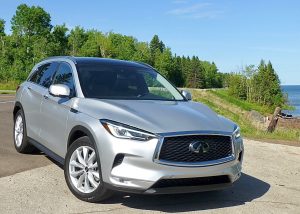
In the ever-expanding Infiniti SUTV stable, the 2019 QX50 is something special — with variable compression power.
By John Gilbert
In the long list of Nissan and Infiniti cars, crossovers and SUVs, the new Infiniti QX50 is one of the neatest, best-designed and best-performing of all.
And that’s before even getting into the amazing technology deployed under the hood.As the driver, you do nothing to make it work except step on the gas. Moderately, please.
It is called “variable compression” and it actively alters the engine’s compression ratio into a mind-blowing range from the low 8-to-1 figure common to older car buyers who seek high gas mileage, to more than a 14-to-1 ratio that best exemplifies the most high-tech performers.
Automotive engineers always have been striving to improve efficiency of internal combustion engines, seeking ways to achieve the magic trio of increased power, increased fuel economy, and decreased emissions. Direct fuel injection and computerized engine operation have helped, and variable valve timing has been a brilliant breakthrough in the last decade, including such tricks as Atkinson Cycle and Miller Cycle to alter valve timing and coax the air-fuel mixture to spend more time combusting.

The engine shroud doesn’t tip off that the 2.0-liter turbo 4 has 268 horsepower and 280 foot-pounds of torque.
In the four cycles — intake, compression, combustion and exhaust — an engine’s ability to streamline the process and increase the ability to most-thoroughly burn the air-fuel mixture for maximum power and efficiency has included Honda’s stratified-charge engines and decades of refining it, and more recently is Mazda’s Skyactive concept combining all its technology into a clean-sheet, holistic new way to build modern engines.
All are worthy, as are any and all the other top world car-makers’ efforts, most of which are aimed at taking best advantage of whatever a car’s compression ratio might be.
Nissan, however, has a bunch of impatient perfectionist types wearing white smocks who probably would prefer to pass up the chance to take the family to the lake in favor of building their own lake in the back yard. These engineers started 20 years ago to seek a newer and better idea, and make it happen.
So many of Nissan’s newest cars and engines are impressive to drive, that I always look forward to trying another one. As for this technique, I knew it was coming, I just wasn’t sure when it would find its way to real-world applications. The better idea of varying valve-timing to help combustion instead becomes the best idea of building an engine capable of altering its own compression ratio to take optimum advantage of any valve operation. Read more
Kona gives Hyundai high-caffeine CUV
Filed under: Equinox, Autos
By John Gilbert
DETROIT, Michigan
Driving in Northern Minnesota requires extra diligence because of the long winters and severe ice and snow circumstances, and while moving toward all-wheel-drive has led to enormous growth of Sport Utility Vehicles segment with AWD, the new preference seems to be for the smallest possible vehicle with the attributes of larger SUVs.
Actually, that’s where my wife, Joan, and I are at in considering a new vehicle for the wilds of the North Shore near Duluth, MN. It is difficult to make a decision, however, among the many exceptional small crossovers. And now, bursting upon the scene, is the Hyundai Kona, which meets just about every requirement we have on our list of “finalists.”
Not the least of Kona’s assets is that I attained 33.5 miles per gallon with the optional turbo engine while negotiating the all-terrain roads of suburban Detroit.
If you think you’re keeping up to date on the auto industry, you’re aware how rapidly SUVs are taking over, and how rapidly compact SUVs are going past midsize SUVs. However, while we weren’t paying close attention, something called “subcompact CUVs” were growing faster than even the compact SUVs in the marketplace.
While cars of all sizes suffered in the highly competitive market over the last year, midsize SUVs grew by 9.4 percent in sales. Compact SUVs — the popular gang that includes the Honda CR-V, Toyota RAV4, Nissan Rogue, Mazda CX-5, Jeep Compass, Ford Escape and others — grew 1.7 percent. Meanwhile, Subcompact CUVs grew at a 4 percent clip, more than twice as fast as compacts.
That Subcompact CUV group, Hyundai, suggests, includes the Chevrolet Trax, Honda HR-V, Toyota C-HR, Mazda CX-3, Jeep Renegade, Subaru Crosstrek, Ford EcoSport, and Nissan Kicks, and is projected to grow another 16 percent this yearit is that segment that Hyundai has aimed the Kona.
Named after Hawaii’s elite coffee, the Kona drives similar to how a swig of Kona’s caffeine might give you a quick uplift. Its looks are, in a word, quirky but unobtrusive. Contemporary in its collection of accent lines, contours and grooves, the Kona comes in four varieties, which are the base SE, the SEL, the Limited, and the Ultimate, ranging in price from just a shade under $20,000 to loaded form right up there at $30,000. Read more
Platform, engine, design turn page on Jetta
Filed under: Weekly test drives, Autos
By John Gilbert
For decades, I’ve been a loyal fan of Volkswagen. It dates back to when I was a kid and my mom bought a 1960 Volkswagen Beetle, equipped to survive Northern Minnesota winters with an add-on gas heater, which was an amazing device that could transform 20-below winter nights — at the pull of a switch to activate the 747-like roar of the under-dash device — to 90 above tropical temperature in about minute, after which you could choose 20 below or 90 above, with no intermediary stops.
Following along through the era of Rabbits, then Golfs, GTIs, Jettas, Passats, with side-trips to a Scirocco or Corrado here or there, our family, and particularly our two sons, got exceptional service from such VWs.
So it was with considerable distress that I followed along with the incredible world-wide scandal of the alteration of VW’s 40-plus miles-per-gallon turbo-diesels, which were configured to disable the emission-control stuff except when being tested by the EPA. It turns out, there have been various other companies caught in the same scandal — including virtually all turbo-diesel pickups from the U.S. — but because of the mountain of publicity, it is VW’s to own, and be fined for.
Most impressive, though, is that Volkswagen didn’t just pull out of the U.S., it made an enormous corporate changeover to rally and stay in the market as a solid performer. Adding SUVs, such as the Tiguan, and the Atlas, helped immeasurably. But with the 2019 Jetta compact sedan, we get to experience the best in German engineering, from a high-tech plant in the U.S., at an amazing bargain price.
Volkswagen, which owns Audi, has worked with them to develop and perfect a couple of 2.0-liter 4-cylinder engines, with and without turbochargers, depending upon the application. VW also reduced the displacement of the 2.0 to 1.8 and got almost as much performance with even better fuel efficiency. In the process, Volkswagen created an all-new platform, called the MQB, which, after translation, stands for Modular Transverse Matrix.
An all-new platform can be significant, allowing a vehicle’s unerpinnings to be designed for stiffness from which high-tech suspension and steering geometry can be engineered to be firmed up, balanced, and safer.
With that MQB basis, the new Jetta adds a striking design. The sixth generation served VW well, outselling the popular Golf in the U.S., but its styling was unobtrusively boring, at best. It looked like a child’s soap-carving — and I liked the car! The new Jetta, hitting showrooms by the end of June, 2018 as a 2019 model, has a neater shape, and a very stylish front end and grille. Read more


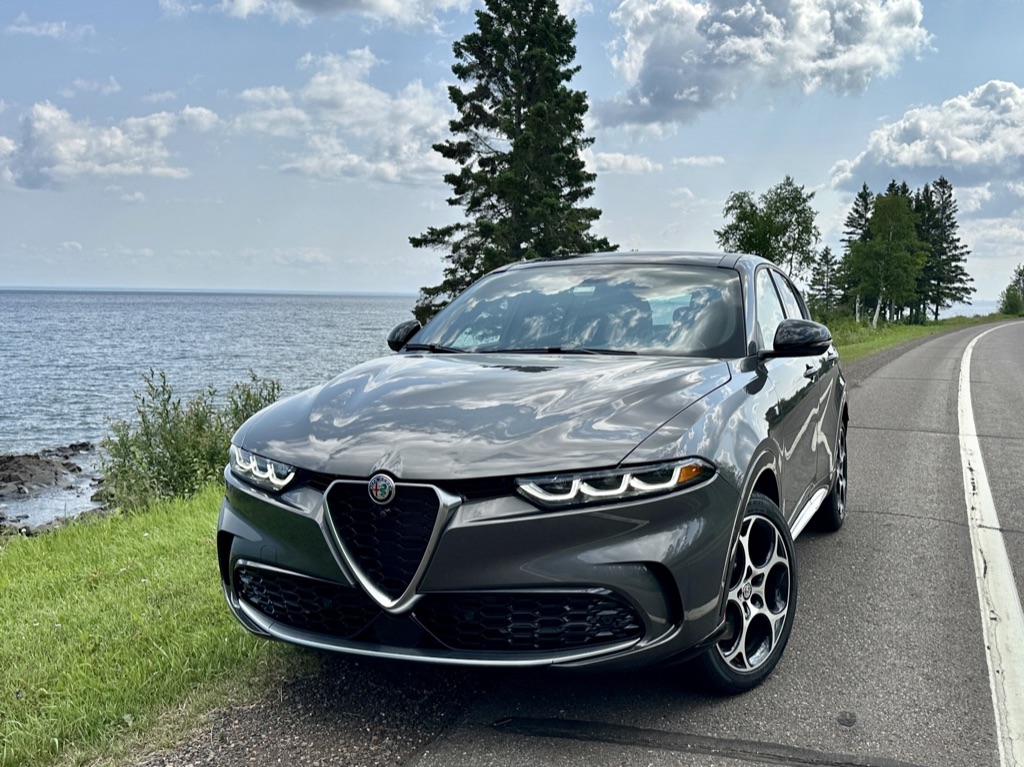


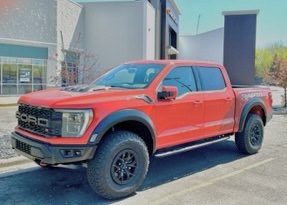

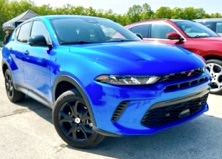


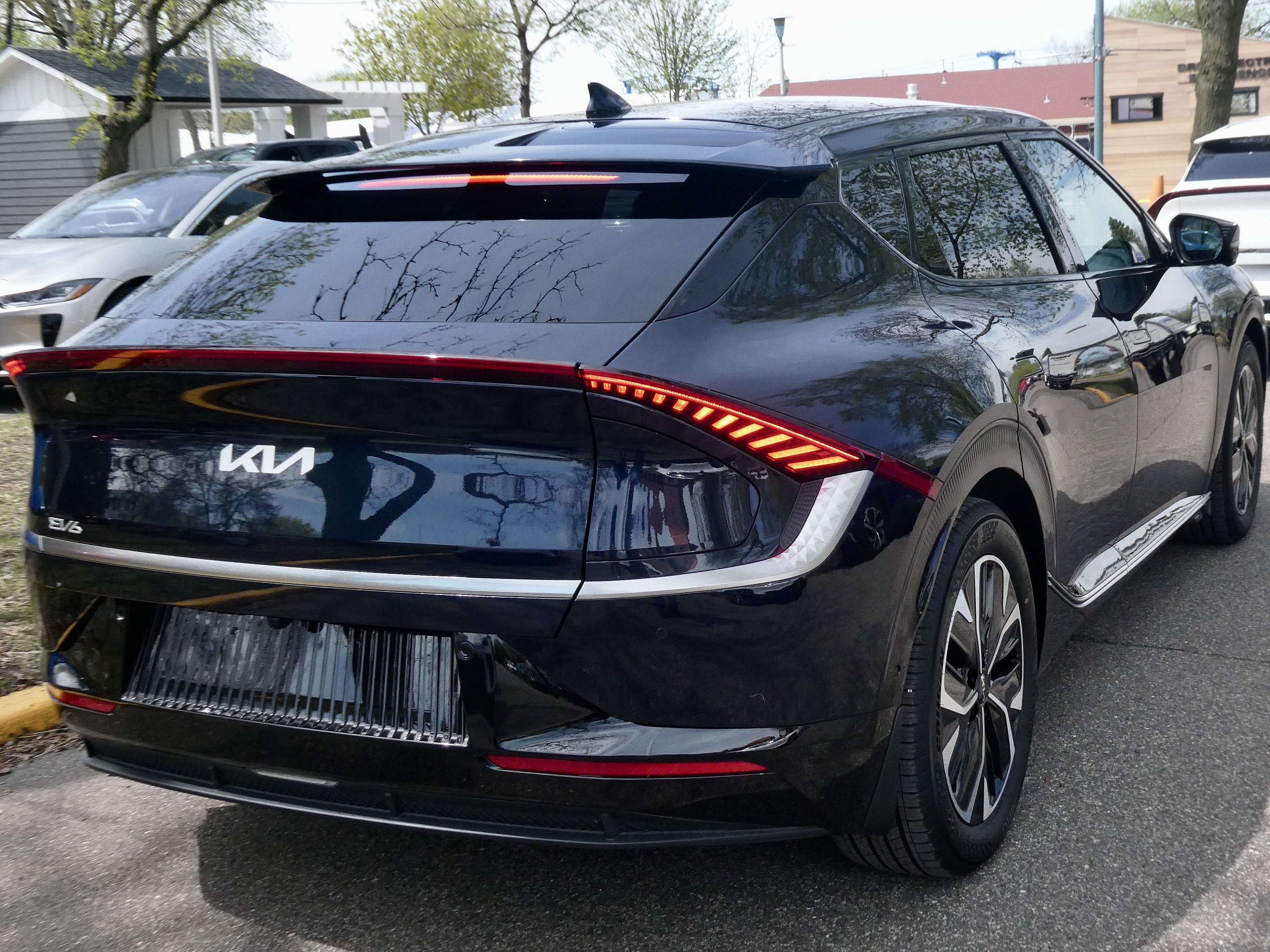
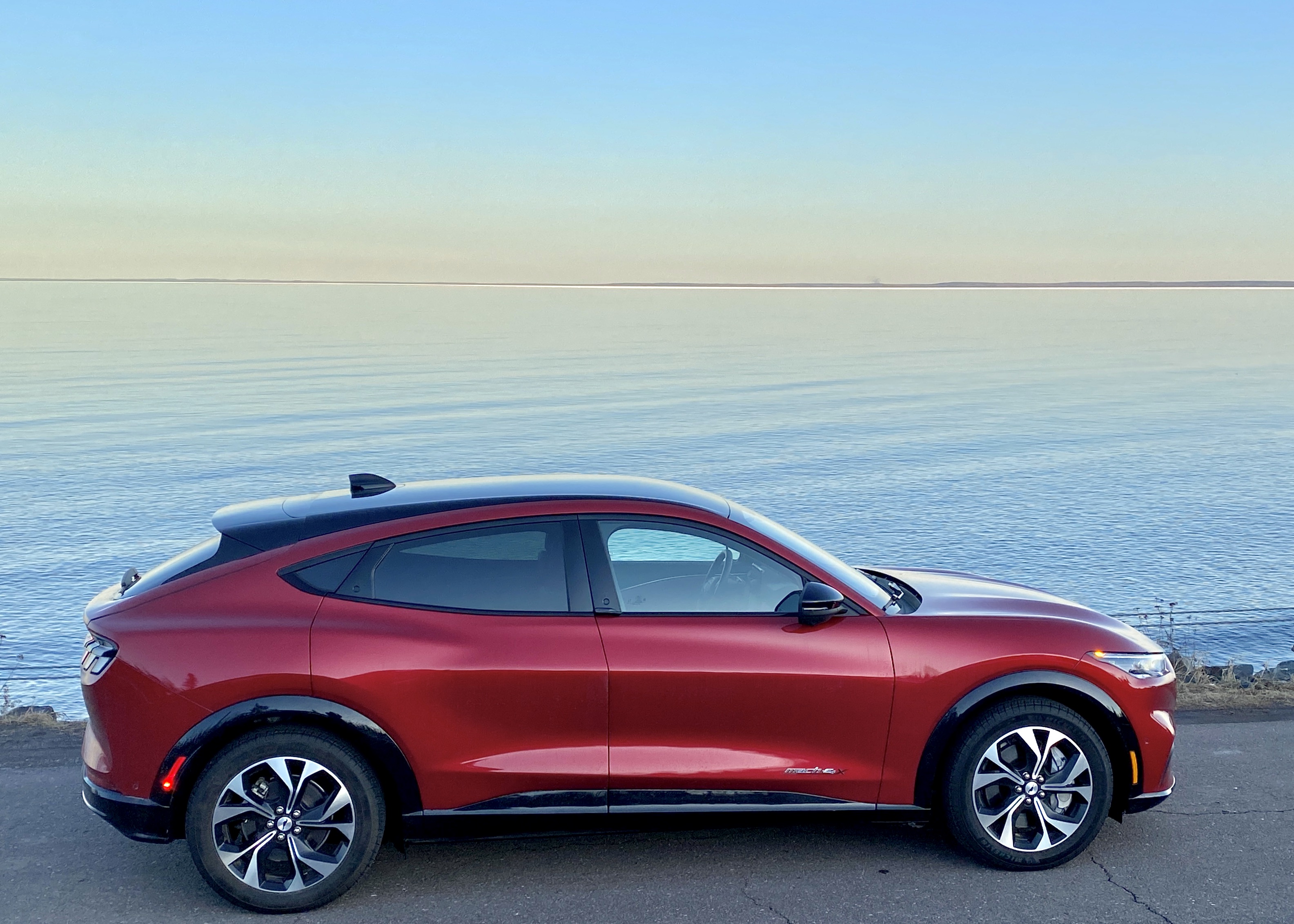
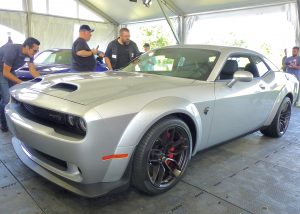
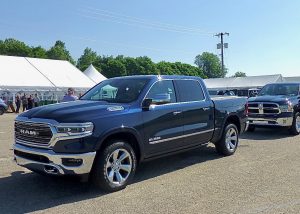
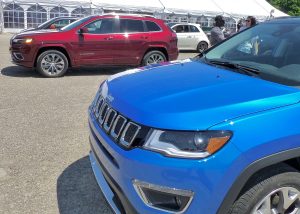
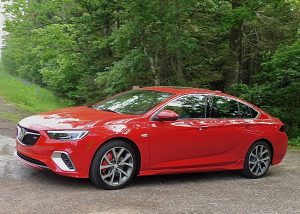

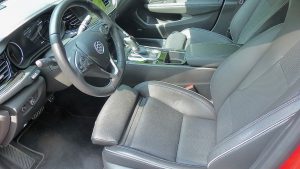
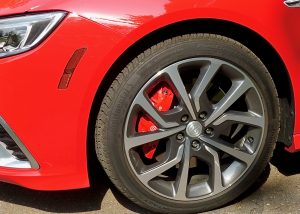
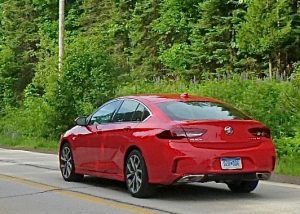
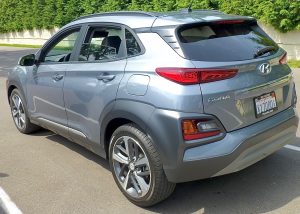
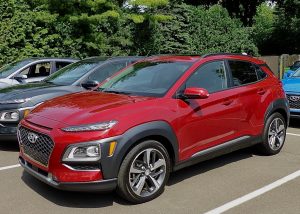
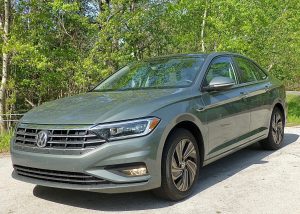
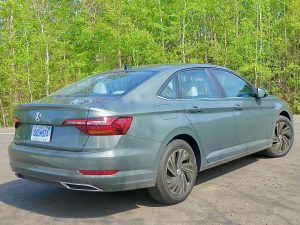

 John Gilbert is a lifetime Minnesotan and career journalist, specializing in cars and sports during and since spending 30 years at the Minneapolis Tribune, now the Star Tribune. More recently, he has continued translating the high-tech world of autos and sharing his passionate insights as a freelance writer/photographer/broadcaster. A member of the prestigious North American Car and Truck of the Year jury since 1993. John can be heard Monday-Friday from 9-11am on 610 KDAL(www.kdal610.com) on the "John Gilbert Show," and writes a column in the Duluth Reader.
John Gilbert is a lifetime Minnesotan and career journalist, specializing in cars and sports during and since spending 30 years at the Minneapolis Tribune, now the Star Tribune. More recently, he has continued translating the high-tech world of autos and sharing his passionate insights as a freelance writer/photographer/broadcaster. A member of the prestigious North American Car and Truck of the Year jury since 1993. John can be heard Monday-Friday from 9-11am on 610 KDAL(www.kdal610.com) on the "John Gilbert Show," and writes a column in the Duluth Reader.